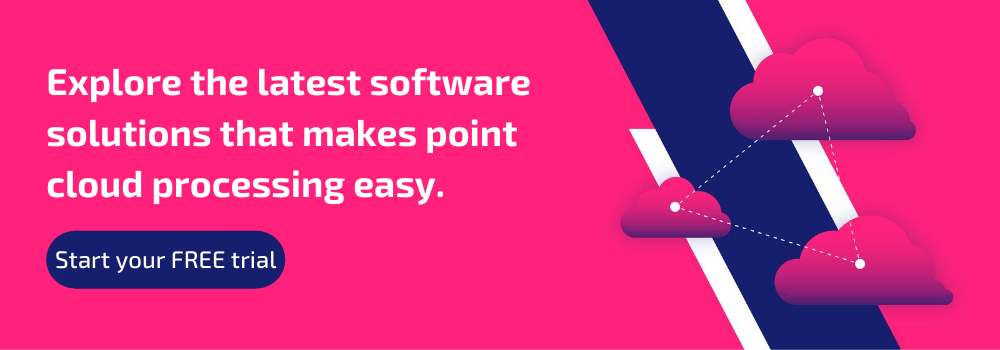The Vercator Roadmap - Where We Started and Where We are Going

Laser scanners have transformed how 3D space is catalogued for real-world mapping and reality capture projects. Compared to manual processes, LiDAR provides relatively quick access to incredible levels of detail and precision. However, the complexity of accurate point cloud registration (and the extraction of useful information) has always been both user-intensive and time-consuming.
Starting in the mid-2000s, laser scanner hardware really came into its own. More robust and standardised laser scanner outputs made it possible to develop hardware-agnostic software that could specialise in perfecting every aspect of the scan-to-outcome workflow.
We built Vercator software to improve the accessibility of point cloud data by accelerating and automating point cloud registration — taking advantage of more stable scanners to revolutionise point cloud processing software.
Surveyors, engineers and wider construction professionals need software that is easy to use and requires less manual intervention. As a spin-off from UCL, we knew that we could combine our AI and scanning knowledge to transform LiDAR data processing — so that’s what we set out to do. This article catalogues how we have approached delivering this outcome to date, and where we plan on going in the future. Let’s get started.
The foundation: Targetless registration and vector-based processing
Vercator software was aimed at significantly improving point cloud processing techniques. In our approach, vectors in overlapping scans are matched and brought into alignment across three planes: first rotational, then horizontal and vertical translation alignment. The original concept of this was outlined by our Director and Chief Science Officer, David Selviah, in this geomatics article back in 2018.
The goal of this approach is to deliver a faster and more robust solution to targetless registration — allowing surveyors to forgo the placement of registration targets in the field without creating a time-consuming registration process back in the office.
The outcome was significant. Our multi-stage and vector-based processing accelerated registration by as much as 40%-80%, depending on the size of the data set, while also allowing for all manual inputs to be front-loaded. Critically, the front-loading of manual inputs enables “hands-off” registration, allowing for scans to be queued for overnight processing — further reducing the work-hours required to register a dataset.
Our approach to registration has fundamentally improved the accessibility of targetless registration, expanding point cloud use cases by minimising the cost of point cloud creation.
Suggested reading: If you want to learn more about multi-stage and vector-based registration, check out our eBook — Point Cloud Processing Has Changed.
The acceleration: Moving into the cloud and adopting SeS
To realise the promise of 3D point clouds, we had to deliver robust, high-speed, automatic alignment of potentially thousands of scans. The best way to do this was to combine our sophisticated vector-based processing software with the power of the cloud. Vercator had to be "cloud-native" — designed for the cloud.
Our cloud implementation was designed to capture data on-site, set new benchmarks for alignment, and simplify downstream analysis. The accessibility and scalability of the cloud were fundamental to Vercator opening the door to faster, parallelised 3D registration and modelling.
With techniques emerging for classifying and 'extracting' complex objects, we could see the cloud becoming even more important — which is a central component of our future planning.
Increased processing power
In the cloud, your ability to scale is practically infinite. That means potentially scaling up capacity to meet the demands of any job. Again, this accelerates processing and adds flexibility to workflows — improving the accessibility of point cloud data by lowering the cost of registration. 
Improved collaboration
Having access to data throughout a design, construction and implementation process is just as important as the asset itself. If you can capture that data early, you can update and share it with other stakeholders. It all depends on cloud-based point cloud registration.
We could already see how Building Information Modelling (BIM) and the creation of digital twins were transforming industries. The cloud provided the ability to have:
- Information stored centrally
- A handoff to other processes and stakeholders
- Global and 24x7 access
- "One source of truth" design
By being in the cloud, we could also connect services via APIs to the growing number of cloud-based collaboration systems such as Autodesk Construction Cloud, including BIM 360.
Suggested reading: You can find in-depth details about how the cloud transforms reality capture workflows in our eBook — Are You Ready For the Cloud?
Change the model
For some time, cloud software models (such as SaaS) have offered users access to a wide range of online applications. Being in the cloud provides hands-on experience with new software with the click of a button.
Our software-enabled service (SeS) model allows users to benefit immediately from any improvements in Vercator software. It also makes it easier to create more relevant payment and usage models — such as using the same tokens to pay for any of the services we provide.
Simplify planning
With modern 3D laser scanners, it isn't uncommon for tens, if not hundreds, of scan positions to be captured daily. We saw that the proliferation of scans would require surveyors to keep accurate details of how on-site scans link together.
We developed the Vercator Field App to pair up scans in sequence whilst live on-site using simple drag and drop functionality. This is an essential part of planning the registration process and can use anything from a 2D site plan to a roughly sketched scheme on a notepad.
The future: A more mobile and smarter outlook
In developing Vercator Cloud, we had two primary input and output challenges:
- Getting data into the cloud in the first place.
- Ensuring integration with downstream production — turning data points into valuable information.
Although we have solved these problems, they remain central points of continued development — looking for better ways to apply reality capture data and simplify its use within a number of different contexts.
Critical developments in the Vercator pipeline include:
1. 5G possibilities
Uploading data to the cloud has dramatically improved as internet speeds have increased. Mobile 5G connection is now becoming a reality and provides much faster speed, even in the field. This makes on-the-fly uploads of smaller scans achievable. Moving scans directly from the scanner into the cloud is likely in the near future, and is something that Vercator will embrace as a way to improve workflows and accelerate processing.
2. Object recognition
For Vercator, point cloud registration and cloud adoption were the start point. Still, we always intended to offer deep analysis of identified components within a scan — turning 3D points into objects such as doors, walls and windows or roads, pylons and vegetation.
By segmenting or classifying a point cloud into geometrically separate elements, we recognise them for 3D geometry model creation or extraction. This significantly improves your ability to use data for real-world applications — guiding construction projects, analysing components and space, and cross-checking outputs with plans. Our most significant development opportunity is applying Artificial Intelligence (AI) to this real-world data and accelerating opportunities such as those already found in Scan to BIM.
Suggested reading: For more details, check out our blog — How to Automate LiDAR Data Classification.
3. SLAM and multi-format scan alignment
The popularity of SLAM (Simultaneous Localisation and Mapping) is growing with the emergence of many practical robotics applications. However, SLAM also presents exciting possibilities for rapid hand-held and wearable scanning technology.
The problem with SLAM is the inaccuracy of the process. Although ideal for rapid and approximate capture of complex indoor spaces, it does not provide the level of precision required to take construction measurements based on that data.
To be used to its full potential, SLAM needs to be deployed in conjunction with more precise forms of reality capture — like traditional LiDAR. We are currently working on ways to use the Vercator algorithm to help fill this role, and create hybrid data sets using a fast and seamless registration process.
Suggested reading: For more context on SLAM, check out our eBook — How SLAM Enables the Evolution of Wearable Reality Capture Technology.
Building a future-proofed platform
At Vercator, our focus is to change how users work with point cloud data. We are making it accessible to all, supporting industry-standard data formats and accepting native data straight from field scanners. We make point cloud processing more affordable by offering a unique Pay-as-You-Go token-based system with no upfront expensive software packages. You only ever pay for what you need.
We hope to continue revolutionising how clients work with their data. We will continue to embrace the power of the cloud and harness its power to speed up the production of meaningful and usable information. The road map is clear: the future is bright and data-driven. Check out our free trial if you want to learn more.

